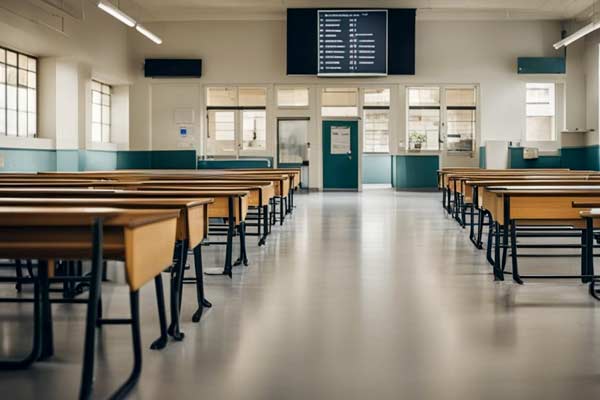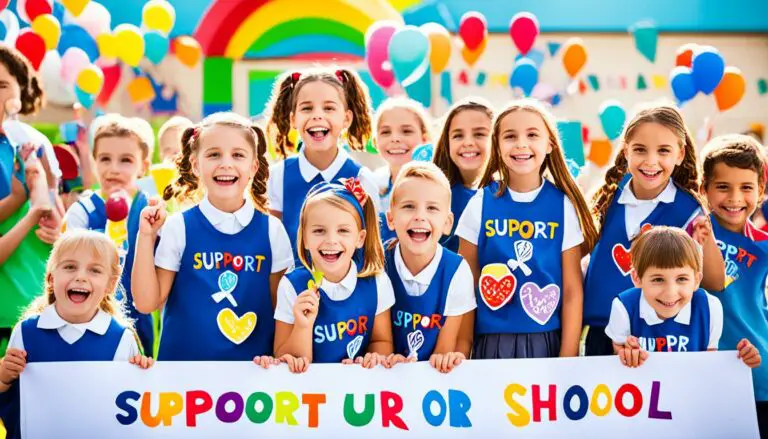Where Can Schools Put Cameras: Guidelines and Best Practices
Schools are supposed to be safe havens for students, staff, and teachers. However, with the increasing number of school shootings and other safety concerns, it has become necessary to ensure that schools remain secure. One of the most effective measures is the use of school security cameras.
School security cameras serve as a deterrent to potential intruders and can help identify and track suspicious behavior. They can also provide evidence in case of an incident, making it easier to prosecute offenders.
In addition, security cameras can help monitor the school environment and detect any escalating tensions or potential safety hazards.
The need for school security cameras is further emphasized by the fact that many schools are in high-crime areas. In such places, security cameras help create a secure learning environment and give parents peace of mind, knowing their children are safe.
It is important to note that school security cameras should be visible to students and staff. This helps create a sense of transparency and accountability and ensures that the cameras are not used for nefarious purposes.
Additionally, it is essential to follow all state and federal laws regarding the use of security cameras in schools, including laws regarding audio recording.
Legal Considerations for Camera Placement
Several legal considerations must be considered when considering where to place school surveillance cameras.
It is crucial to ensure that the placement of cameras complies with all applicable laws and regulations and that the school is not held liable for any violations.
One of the most important legal considerations for camera placement is legality. Schools must ensure that they are placing cameras in areas where they are legally allowed to do so.
This includes areas such as hallways, entrances, and parking lots. However, it is essential to note that there may be restrictions on where cameras can be placed, depending on state and local regulations.
Another critical consideration is privacy. Schools must strike a balance between student privacy and the need for a safe learning environment.
🌟 Hey Students! 🚀 Ready for the ultimate experience? Join us on Studentsinside.com's Facebook, YouTube, WhatsApp, and LinkedIn. Click now for tips, fun, and success vibes! 🌈✨ #StudentLife #JoinUs
Cameras should not be installed in bathrooms or locker rooms where students expect privacy.
Schools should also be transparent about their surveillance policies and inform students and parents about where cameras are located and how they are used.
Law enforcement is another entity that should be considered when placing cameras in schools. Cameras should be placed in areas where they can assist law enforcement in identifying and responding to threats.
However, schools should also be mindful of the potential for cameras to be used for surveillance purposes beyond their intended scope.
Finally, liability is an important consideration when placing cameras in schools. Schools must ensure they are not held liable for privacy violations or other legal issues related to camera placement.
This includes ensuring that cameras are properly installed and maintained and that any footage is stored securely and only accessed by authorized personnel.
Privacy Concerns and Student Rights
When installing surveillance cameras in schools, privacy concerns and student rights are essential factors to consider. Schools need to ensure that they are not invading students’ privacy and that they are transparent about their use of surveillance technology.
One of the main concerns with school surveillance is the invasion of privacy. Students have the right to privacy, and schools must ensure that surveillance cameras are not being used to monitor students in areas where they have a reasonable expectation of privacy, such as bathrooms or locker rooms.
Schools should also be transparent about their use of surveillance technology and inform students and parents about where cameras are located and why they are being used.
The Family Educational Rights and Privacy Act is a federal law protecting student education records privacy. However, FERPA does not specifically address using surveillance cameras in schools.
Some courts have ruled that video footage obtained by school officials, or other district contractors is not considered education records, which means that parents may not have the right to access the footage.
To address privacy concerns and protect student rights, some states have passed laws that regulate the use of surveillance cameras in schools.
For example, some states require schools to obtain written consent from parents before installing cameras, while others prohibit the use of cameras in some school regions.
School Areas Where Cameras Can Be Placed
When it comes to ensuring school safety, security cameras are an effective tool. However, knowing where to place them is crucial to maximize their effectiveness. Here are some areas in schools where cameras can be placed:
Classrooms
While installing security cameras in classrooms is legal, it is crucial to consider privacy concerns. Some schools choose to only place cameras in classrooms with a history of disciplinary issues, while others install cameras in all classrooms. Either way, informing teachers and students that they are being monitored is vital.
Hallways
Hallways are high-traffic areas where altercations or emergencies can occur. Placing cameras in hallways can increase visibility for school faculty and help them respond quickly to incidents.
Parking Lots
Parking lots are frequently targeted for theft and vandalism. Installing cameras can deter criminals and offer evidence for any incidents.
Cafeterias
Cafeterias are another common area where cameras can be placed. Recording in these areas can increase visibility for school faculty and help them respond quickly to altercations or emergencies.
Common Areas
Common areas such as auditoriums, gymnasiums, and libraries are effective places to install security cameras. Recording in these areas can increase visibility for school faculty and help them respond quickly to altercations or emergencies.
Outdoor Areas
Outdoor spaces like playgrounds and courtyards should be monitored. Cameras can prevent crime and offer evidence in case of incidents.
Perimeter
Installing cameras around the school’s perimeter can help deter unauthorized individuals from entering the school grounds. It can also provide evidence if an incident occurs outside the school.
Sports Fields
Sports fields are another area where cameras can be placed. Recording in these areas can increase visibility for school faculty and help them respond quickly to altercations or emergencies.
Areas Where Cameras Should Not Be Placed
Regarding placing security cameras in schools, there are certain areas where cameras should not be placed due to privacy concerns. These areas include restrooms, locker rooms, and changing areas.
Restrooms
Restrooms are considered private areas, and placing cameras in them would violate students’ privacy rights. Even if the cameras are not recording audio, they still capture visual information that could be sensitive. Students have a right to feel safe and secure in restrooms; placing cameras in them could make them feel uncomfortable or violated.
Locker Rooms
Locker rooms are also considered private areas; placing cameras in them would violate students’ privacy rights. Students change clothes in locker rooms, and placing cameras in these areas could capture images of students in various undressing stages, which is inappropriate.
Changing Areas
Changing areas, such as those used for physical education classes or sports teams, are similar to locker rooms in that they are private areas where students change clothes. Placing cameras in these areas would violate students’ privacy rights and make them feel uncomfortable or violated.
Access to Surveillance Footage
Access to surveillance footage is a critical aspect of school video surveillance policy. Schools must determine who has access to video footage, how they can access it, and what they can do with it.
Parents have the right to request access to video footage that includes their child. Schools should have a straightforward procedure for parents to make such requests.
Administrators, teachers, and staff should only have access to video footage if necessary for their job duties. Schools should limit access to video footage to only authorized personnel.
Law enforcement may request access to video footage if they have a legitimate reason to do so, such as investigating a crime. Schools should have clear procedures for responding to law enforcement requests for video footage.
Live video footage streaming should only be allowed in emergencies like an active shooter. Schools should have a clear policy for when and how live streaming can be used.
The Role of Technology in School Security
Modern technology has become an indispensable tool in ensuring the safety and security of schools.
In recent years, video surveillance systems have gained popularity for their ability to deter and detect crime on school grounds.
These cameras can be strategically placed throughout a school to provide maximum coverage and visibility.
IP security cameras are among the most popular in schools today. These cameras are connected to the school’s network and can be accessed remotely from a central location.
This allows school administrators to monitor real-time activity and respond quickly to threats. Additionally, many cameras come equipped with video analytics, which can help detect and respond to incidents faster.
Rhombus Systems is a notable company in school security, offering a video security system with advanced features like facial and license plate recognition. This helps in identifying potential threats even before they approach the school.
Additionally, their system integrates with other security measures like access control and intrusion detection.
However, it’s crucial to understand that while technology enhances school security, more than relying solely on cameras is needed for complete safety.
School administrators must also implement strong security protocols and policies and properly train staff and students to respond to emergencies.
Addressing Issues Related to Surveillance
Video surveillance technology is a powerful tool that can help schools address various safety, security, and accountability issues.
Understanding the risks and challenges of using surveillance cameras on campus is essential. A primary concern is privacy. Schools should ensure cameras aren’t located in areas like bathrooms or changing rooms where individuals expect privacy.
Additionally, schools should establish clear policies and procedures for collecting, storing, and using surveillance footage to protect the privacy of individuals who may be captured on camera.
Another issue related to surveillance is equity. Schools must ensure that cameras do not disproportionately impact specific groups of students or staff members, such as those already marginalized or vulnerable.
Additionally, schools should consider the impact of surveillance on students’ sense of safety and well-being and the potential for cameras to contribute to a culture of fear and mistrust.
Despite these challenges, video surveillance can be a valuable tool for addressing various issues on campus. For example, cameras can help deter bullying, vandalism, and other bad behavior by providing a visible and constant reminder that the school is watching.
Additionally, cameras can help identify and prevent theft, cheating, and other forms of academic misconduct.
In emergencies, cameras can monitor entrances and exits, identify potential threats, and coordinate a response.
Finally, cameras can provide a valuable tool for accountability by allowing schools to monitor the behavior of staff members and ensure that they are following established policies and procedures.








